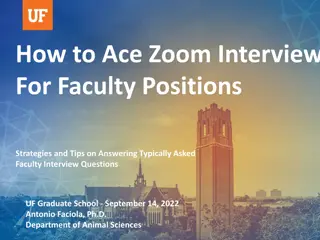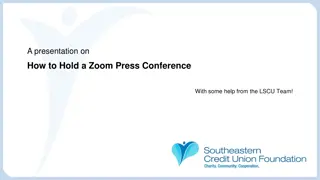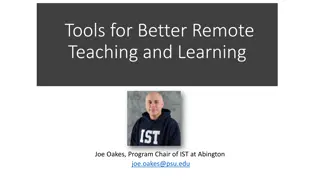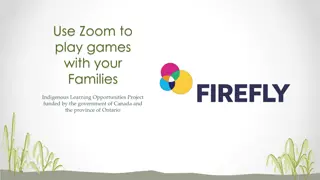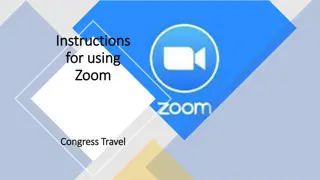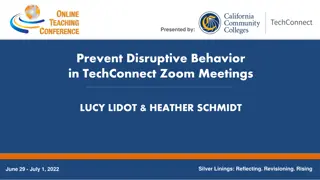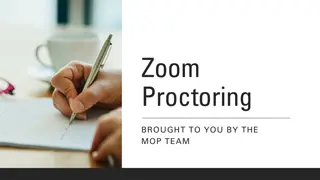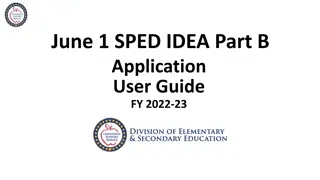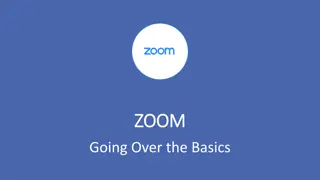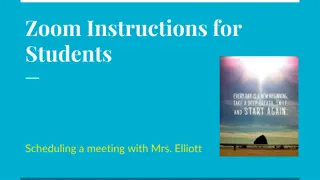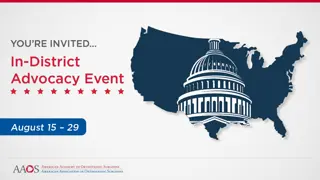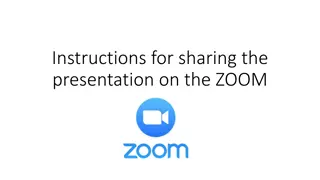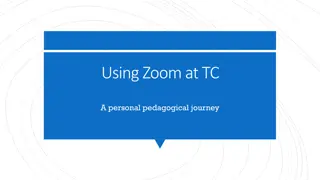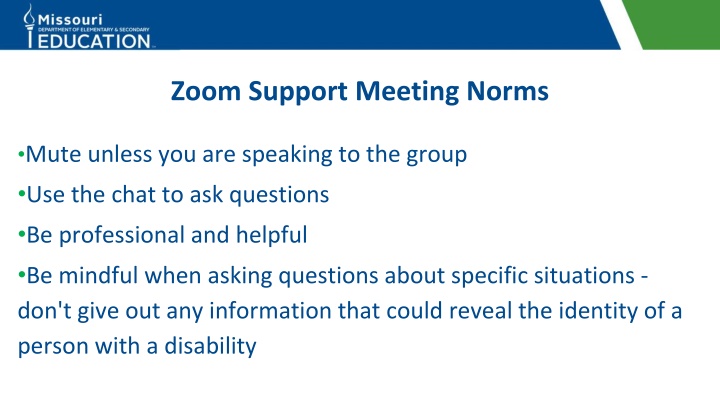
Educational Benefit Review Process: Understanding IEP Evaluation
Discover the Educational Benefit Review (EBR) process for assessing the effectiveness of Individualized Education Programs (IEPs) over multiple years, ensuring educational benefit for students with unique needs. Dive into the importance of EBR, its methodology, and resources available for a comprehensive review.
Download Presentation

Please find below an Image/Link to download the presentation.
The content on the website is provided AS IS for your information and personal use only. It may not be sold, licensed, or shared on other websites without obtaining consent from the author. If you encounter any issues during the download, it is possible that the publisher has removed the file from their server.
You are allowed to download the files provided on this website for personal or commercial use, subject to the condition that they are used lawfully. All files are the property of their respective owners.
The content on the website is provided AS IS for your information and personal use only. It may not be sold, licensed, or shared on other websites without obtaining consent from the author.
E N D
Presentation Transcript
Zoom Support Meeting Norms Mute unless you are speaking to the group Use the chat to ask questions Be professional and helpful Be mindful when asking questions about specific situations - don't give out any information that could reveal the identity of a person with a disability
IEP Meeting Facilitators The Department of Elementary and Secondary Education (DESE) values being committed to excellence, focusing on the future, and being dedicated to serving others. Our mission is providing access to opportunity and improving lives through education. The Office of Special Education is adding State IEP Meeting Facilitators for the 2022-23 school year. If you are interested in joining DESE and the Office of Special Education in fulfilling our mission and would like to become a facilitator, visit our website for more information: https://dese.mo.gov/media/pdf/facilitator-recruitment-2022
Educational Surrogate Critical Shortage The Department of Elementary and Secondary Education is looking for caring individuals who want to make a difference in the life of a student in need. Educational surrogates make educational decisions for students who receive special education and do not have someone to fill that role. Please share the following links with those willing to give a little time to improve the life of a student. https://www.youtube.com/watch?v=H_u8u5M28RI https://dese.mo.gov/special- education/compliance/educational-surrogate
DESE May 19th Zoom Educational Benefit Review: Why, What, When, and How to Prepare May 19, 2022
Objectives for Today Understand Educational Benefit Review (EBR) Understand why DESE is changing from the traditional onsite to the EBR onsite Understand how specific districts are chosen for this compliance and improvement effort Discuss how to prepare for the EBR
6 What Is an Educational Benefit Review?
What is it? An educational benefit review process is a systematic way for school systems, families, and SEAs to review a student s IEPs across multiple years and determine whether the IEPs were reasonably calculated to provide educational benefit, based on the student s unique circumstances. This evaluation is typically done by comparing a student s current IEP with IEPs from the two prior years. Resource: Fast fives | Five Questions Answered about Educational Benefit Review | NCSI 2021
What does an EBR onsite entail? Four common processes across CA, CT, and PA; MO has adopted these processes for the 2022 and 2022-23 selected pilot onsite visits. Step 1: Review three consecutive years of a student s IEPs and document key pieces of information, including present level of performance, annual goals and modifications, needs or concerns, services and placement, growth/progress, and any adjustments or changes to the IEP across years. Step 2: Consider the relationship between these components of the IEPs. Step 3: Analyze the student s growth and progress over time in relationship to the IEP components. Step 4: Look for patterns and assess the overall educational benefit to the student.
Who will be involved during the onsite visit if your district has been selected? District and Building Leaders General Education and Special Education Special Education Staff General Education Staff Some of the states involve parents The student files selected for the EBR visit will determine what staff are involved in the process.
10 When Will the Educational Benefit Review Occur for the Districts Selected from Cohort 1?
Cohort 1 Educational Benefit Review Visits for 22-23 During the Spring of 2022, the EBR process was piloted with some Cohort 3 districts. Cohort 1 districts will be the first to go through the process as part of the Tiered Monitoring Onsite process during 2022-23. Six districts have been selected for onsites in 22-23 and they were notified in September 2021. EBR visits will occur between November 2022 and Spring 2023.
12 Why Is DESE Using Educational Benefit Review for the Onsite Process?
13 The Law
14 The Law The Individuals with Disability Act (IDEA) states that each child s IEP must contain: (3) A description of (i) How the child s progress toward meeting the annual goals described in paragraph (2) of this section will be measured; and (ii) When periodic reports on the progress the child is making toward meeting the annual goals (such as through the use of quarterly or other periodic reports, concurrent with the issuance of report cards) will be provided [300.320(a)(3)] Federal Regulation, IDEA; 34 CFR 300.320 (a) (2)
15 The Law Required by IDEA: Monitor and provide parents with documentation of progress towards mastery for annual IEP goals and objectives. Provide documentation of participation in statewide assessments for students with disabilities.
16 Endrew Case The case revolved around a central question: Must schools provide a meaningful education in which children show significant progress and are given substantially equal opportunities as typical children, or can they provide an education that results in just some improvement?
17 Endrew Case Supreme Court Decision When all is said and done, a student offered an educational program providing merely more than de minimis progress from year to year can hardly be said to have been offered an education at all. For children with disabilities, receiving instruction that aims so low would be tantamount to sitting idly... awaiting the time when they were old enough to drop out. Questions & Answers on U.S. Supreme Court Case Decision Endrew F. v. Douglas Co. School District Re-1, US Depart. of Ed. Washington, DC, Dec. 7, 2017
18 Summary of Supreme Court Decision for Endrew The court s decision increases the education expectations for children with disabilities. We must be able to show more than minimal progress for students with disabilities. IEPs must not look substantially similar year after year.
19 Is there anything IEP teams should do differently? 1. Identifying present levels of academic achievement and functional performance; 2. The setting of measurable annual goals, including academic and functional performance; and 3. How a child s progress toward meeting annual goals will be measured and reported. Questions & Answers on U.S. Supreme Court Case Decision Endrew F. v. Douglas Co. School District Re-1, US Depart. of Ed. Washington, DC, Dec. 7, 2017
Moving from a Compliance Focus to a Comprehensive EBR Process DESE wants the onsite process to be beneficial to districts and to help improve outcomes for students. The ultimate goal would be for all districts to use the EBR process as an internal process for self-improvement to ensure IEPs are reasonably calculated to increase student achievement and progress toward goals. DESE will not be determining educational benefit but rather evaluating to see if the components are present to reasonably calculate educational benefit.
21 Why Is a District Selected for an Onsite Educational Benefit Review?
22 The Why Starts with Your Data: The Special Education Performance Profile (Known as the SPP)
Missouri Department of Elementary and Secondary Education Special Education District Profile Redacted SPP for Training As required by the Individuals with Disabilities Education Improvement Act of 2004, the Missouri State Performance Plan (SPP) is a plan that includes targets for student performance indicators and improvement activities designed to enable districts (regular districts, charter schools and state operated programs) and the state to meet those targets. Missouri is also required to publicly report on the performance of each local education agency (LEA) in relation to the targets established in the SPP. The State Performance Plan can be found online at: http://dese.mo.gov/special-education/state-performance-plan The purpose of this profile is to: 1. Provide information to the public about the performance of districts on the SPP Indicators 2. Address other outcome measures for students receiving special education services. Page 1 of this profile summarizes whether the district met or did not meet the target for each indicator. The remaining pages provide additional data for the SPP indicators (noted as "SPP #"). Students with disabilities are those students who qualify for special education services and who have an Individualized Education Program (IEP). Data sources are provided for each table included in this profile, however most of the data are reported by the district directly to the Department. * - Indicates the number or percent has been suppressed due to cell size. Page 1 of 23 Printed: 2/15/2022 6:18:21 PM
Missouri Department of Elementary and Secondary Education Special Education District Profile LEBANON R-III (053-113) * - Indicates the number or percent has been suppressed due to cell size. Page 3 of 23 Printed: 2/15/2022 6:18:21 PM
Missouri Department of Elementary and Secondary Education Special Education District Profile * Data are collected from districts in conjunction with their Monitoring review, so data is not available for all districts every year. * - Indicates the number or percent has been suppressed due to cell size. Page 4 of 23 Printed: 2/15/2022 6:18:21 PM
Missouri Department of Elementary and Secondary Education Special Education District Profile Child Count and Educational Environment Data - (Table B) Child Count (5K-21) and Parentally-Placed Private School Students (PPPS) (B1) The following table indicates the number and incidence rate of students with disabilities by disability category. * - Indicates the number or percent has been suppressed due to cell size. Page 9 of 23 Printed: 2/15/2022 6:18:21 PM
Missouri Department of Elementary and Secondary Education Special Education District Profile Child Count and Educational Environment Data - (Table B) School-age Educational Environments (SPP 5) (B3) The following table indicates the amount of time students with disabilities are included in the general education classroom. * - Indicates the number or percent has been suppressed due to cell size. Page 11 of 23 Printed: 2/15/2022 6:18:21 PM
28 How Do the Selected Cohort 1 Districts Prepare for the EBR Onsite
2021-22 Completion of the Individual Corrective Action Plans (CAPS) from Tiered Monitoring Completion of the Corrective Action Plan (CAP) from Tiered Monitoring Professional Development around Compliance Improving compliance and ensure IEPs are based on data to allow the student to make progress 2022-2023 Professional Development around Compliance Improving compliance and ensure IEPs are based on data to allow the student to make progress Working with DESE staff to provide documents/files and plan for the schedule during the visit Internally complete Educational Benefit Review Worksheets on selected student files prior to the onsite visit During the visit, there will be an entry conference, interviews with school teams around the selected student files, and an exit conference; there may also be classroom observations that has been a process in previous onsite visits, and we are still working on this component for EBR.
Criteria for Student File Selection DESE pre-selected criteria may apply based on district SPP data 3-5 students will be reviewed Students will need to have three consecutive IEPs written by the district - no transfer IEPs that were accepted should be used Some of the students will need to have transitioned from at least one building to another during the three IEPs (Elem to MS or MS to HS) At least one student file should have post-secondary transition planning Evaluation Report or RED must exist for the cycle - no three year waiver files should be chosen for review Compliance Review in IMACS 2.0 for CAPs and ICAPS will be done on the RED, Evaluation Report, and third (current) IEP
What do the team EBR conversations entail? Typically, the district staff involved in the student s IEP will be present for the EBR conversation with DESE staff and Compliance Consultants (typically this will be one DESE staff member and one compliance consultant). Staff who wrote a previous IEP may also participate on the team. The intent of these conversations is to discuss the documentation of educational benefit; this process is not designed to be punitive but rather a collaborative approach around both procedural compliance and instructional practices to enable the student to attain IEP goals. The next slides help guide these collaborative conversations.
Educational Benefit Review Worksheet EBR Worksheet
Sample IEP Comparison Chart Years 1- 3 Sample Student EBR Worksheet Years 1-3
Final EBR Worksheet Final EBR Worksheet
How Can Districts Start Using EBR Internally for Improvement Efforts? Work with your local compliance consultant to set up internal support for you staff in the EBR process
36 How Can District Staff Work Together to Prepare for the EBR and Overall Compliance?
Preparation The District will work closely with: District Special Education Administration/PCs/Teachers The RPDC Special Education Consultants DESE Compliance Staff
38 Is there anything IEP teams should do differently? 1. Identifying present levels of academic achievement and functional performance; 2. The setting of measurable annual goals, including academic and functional performance; and 3. How a child s progress toward meeting annual goals will be measured and reported. Questions & Answers on U.S. Supreme Court Case Decision Endrew F. v. Douglas Co. School District Re-1, US Depart. of Ed. Washington, DC, Dec. 7, 2017
District Collaboration - IEP Development General Education Participation Grade Level Standards Functional Performance Changes in Current Functioning Accommodations and Modifications
Professional Development The RPDC Compliance Consultant and Improvement Consultant can be of assistance in this area as well as preparing for the EBR onsite PD topics: Quality Eligibility Determinations, Quality IEP, SMART Goals or Standards Based Goals, Post-Secondary Transition, MAP- A, Standards Based IEPs, Accommodations and Modifications, Literacy Modules, etc.
41 What Questions Do You Have about the EBR Onsite Process?



